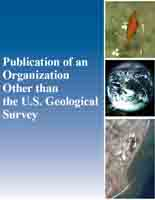Assessing causes and consequences of winter surface water dynamics in California’s Central Valley using satellite remote sensing
Links
- More information: Publisher Index Page (via DOI)
- Open Access Version: Publisher Index Page
- Download citation as: RIS | Dublin Core
Abstract
California's Central Valley is increasingly vulnerable to winter floods. A comprehensive spatial baseline of flood extents is critical for inundation analyses that can enhance future flood predictions, but cloud cover has prevented the regular observation of surface water extents with optical satellite imagery. In this study, we leveraged the daily resolution of Moderate Resolution Imaging Spectroradiometer (MODIS) satellite data to create a continuous series of monthly Dynamic Surface Water Extent (DSWEmod) images across the Central Valley from January 2003 to January 2023. We used the timeseries to assess the climatic driving forces of winter (Oct–April) surface water variability at sub-basin and pixel scales. At the sub-basin scale, we evaluated the influences of winter precipitation, occurrence of atmospheric rivers, and antecedent soil moisture on monthly surface water extents and found that the greatest correspondence occurs in mid-winter (Dec–Feb); in contrast, non-precipitation drivers such as water management play a stronger role in autumn and spring. The pixel-level analysis identified the probabilities of precipitation-driven surface water occurrences in the Sacramento basin are highest along rivers, conveyance channels, and floodways, with higher probabilities under wetter antecedent soil moisture conditions. Precipitation-driven surface water occurrences are also common in leveed areas and outside flood boundaries designated by state and federal agencies where exposure of structures to inundation was larger in terms of their value. Finally, areas with more frequent precipitation-driven flooding have poor recharge potential but are commonly within 5 km of areas classified as having good potential. This study demonstrates a novel approach for exploring the utility of MODIS for understanding surface water dynamics in mid-winter, a period characterized by peak precipitation, flood risk, and surface water extent. This information can provide valuable insights for (1) assessing flood risks for infrastructure and populations, (2) identifying areas most suited to strategic water management investments to increase recharge, and (3) analyzing precipitation thresholds that trigger flooding to allow proactive water management strategies to minimize damage and maximize recharge.
Study Area
| Publication type | Article |
|---|---|
| Publication Subtype | Journal Article |
| Title | Assessing causes and consequences of winter surface water dynamics in California’s Central Valley using satellite remote sensing |
| Series title | Journal of Flood Risk Management |
| DOI | 10.1111/jfr3.70080 |
| Volume | 18 |
| Issue | 2 |
| Publication Date | June 03, 2025 |
| Year Published | 2025 |
| Language | English |
| Publisher | Wiley |
| Contributing office(s) | Western Geographic Science Center |
| Description | e70080, 14 p. |
| Country | United States |
| State | California |
| Other Geospatial | Central Valley |


